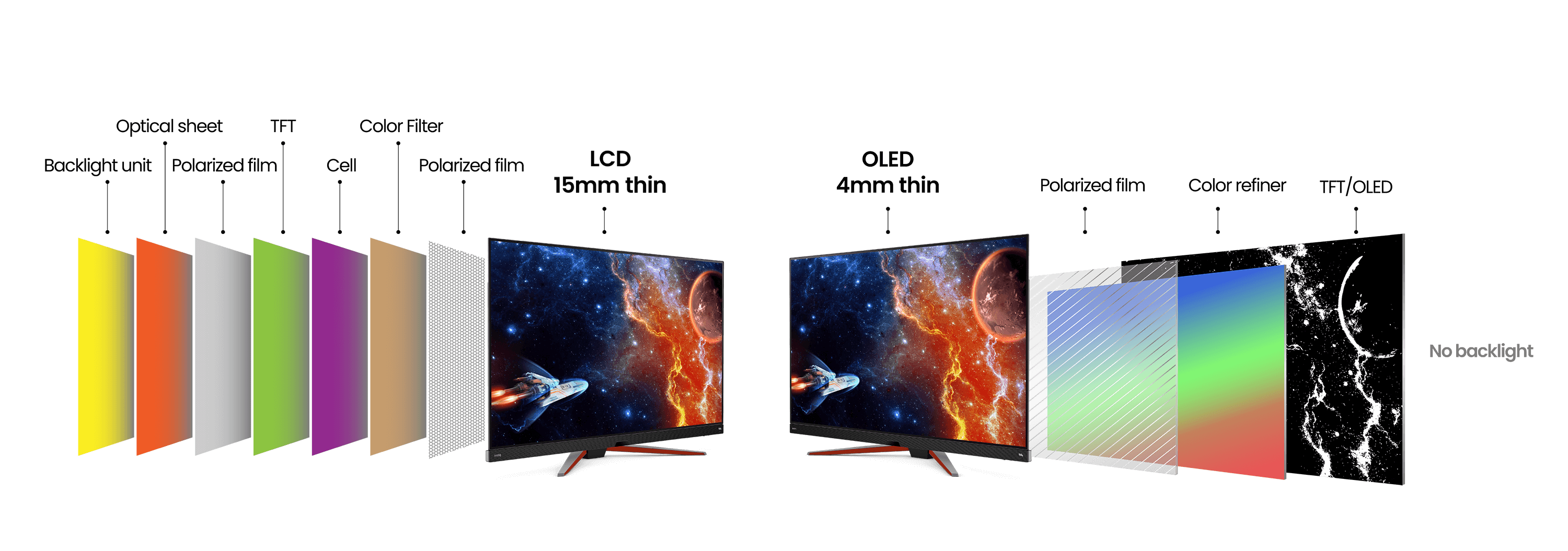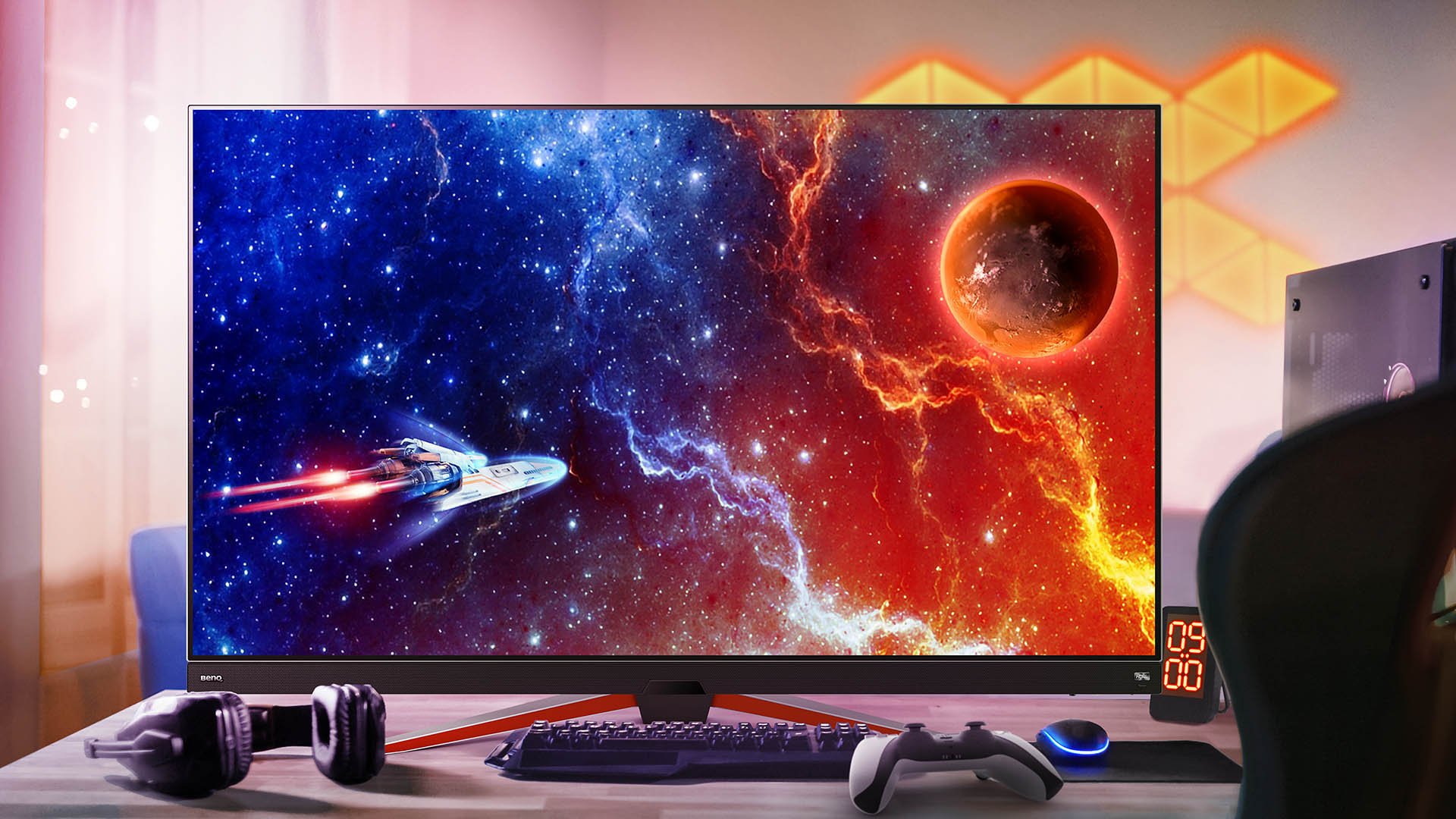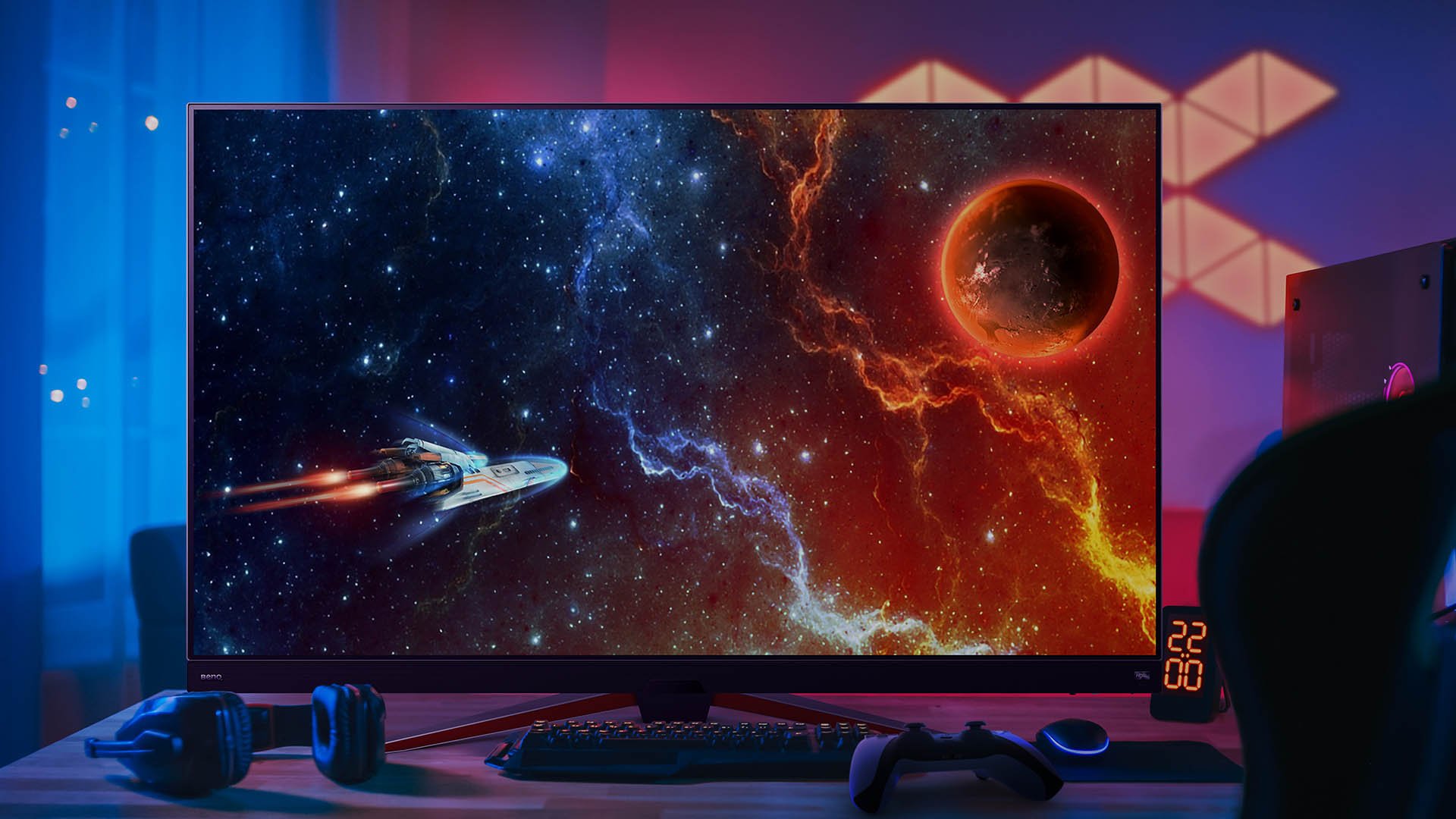You’ve undoubtedly heard of LED before, which stands for “light emitting diodes”. This device lighting technology is found in so many fields and product classes. From lightbulbs to car headlights, flashlights, and the screens of monitors and TVs. Yet, when monitor companies use the term LED, it actually refers to the backlight of LCD monitors. LEDs in screens act as the light source for individual pixels, allowing for the flat screens and bright monitors consumers have come to expect from modern products due to their super compact design. There are other types of light sources for LED, such as CCFL, or fluorescents. But LEDs have proven far better over the years, especially in cutting down the dimensions of TVs. Without LED, thin flat screen form factors would not be possible. So what’s OLED? You can think of OLED as an evolution of LED, or next generation LED, even though OLEDs have been around for quite some time by now. The term stands for “organic light emitting diode”, which means that each pixel is self-lit, and therefore there’s no central light source needed, as is the case with LCDs of all types, LED or otherwise. With no backlight or edge light, OLED screens are even thinner than regular LCD displays. But that’s not the only difference.
OLEDs use an organic compound to create the electroluminescent layer which emits light, instead of liquid crystal, which needs to be lit by a separate source. OLEDs are self-illuminating as we said, and this has several advantages in display quality beyond form factor, which many feel creates a better viewing experience.


Table of Contents
Why is OLED Better Than Regular LCD?
It’s helpful to sum this up into three main areas. The first is image quality.
Many people wonder if OLED is sharper than LCD. Technically, no. Both have the same pixel count, for example ultra HD 4K 3840 x 2160. However, OLED offers better pixels so the image you get is far more impressive. For one, OLED has essentially infinite contrast. No more murky dark grey instead of black, as happens with LCD. OLED delivers inky, deep blacks with contrast ratios that are hard to measure. Since each pixel lights itself, pixels can turn off completely, resulting in perfect blacks. In effect, a 4K OLED has 8.3 million local dimming zones, each a pixel. The best LCDs have maybe a thousand local dimming zones, and can’t turn single pixels on or off. The light source is always on, affecting the entire panel with light bleed. This is why many LCDs have very unconvincing black levels.
The next area OLEDs have an undisputed edge is viewing angles.
Again, the self-illuminating pixels of OLEDs deliver a superior experience. There’s no central light source that diffuses to varying degrees across the screen. Each pixel is equally lit or unlit, meaning the angle you view the OLED from makes nearly no difference. Even from extreme viewing angles, contrast and color remain perfectly consistent with an OLED display, while LCDs show quality degradation. It helps that OLEDs are thinner than LCDs, and fit in more locations with ease, be it a living room (TV) or a work desk (monitor).
When it comes to gaming, the issue of response time is a big deal, and a major win for OLEDs.
To put it simply, OLEDs have the closest you can get to zero response time, which prevents ghosting or image smearing. While an LCD has to apply variable voltage to its liquid crystals in order to “rotate” them to change the transmittance or luminance of the panel, which takes time, OLEDs directly generate the require light, and that’s near instant. OLEDs are by far the most responsive display type for gaming. While LCDs often pride themselves on having 1ms GtG (grey to grey) or MPRT (moving picture response time), OLEDs go well below that to something like 0.1ms. Even with advanced image processing, OLEDs still outperform LCDs with similar settings.
Is OLED Gaming Better and Also Safer for My Eyes?
When adjusting for seating position, the better contrast and wide viewing angles of OLED do result in reduced eye fatigue, dryness, and tearing. LCDs often compensate for lower contrast with extreme brightness that can easily overwhelm you and lead to eye discomfort. OLEDs don’t do that. In that respect, OLED is better for gaming, especially when you figure in the fast response and far superior contrast that ensures accurate detail retention.

Day


Night

As OLED is becoming more popular for gaming monitors, products like the BenQ EX480UZ bring gaming experiences that are on an entirely different level from standard LCDs. One of the biggest issues with gaming on an LCD is losing details to crushed blacks or overexposed bright areas. And video games often depend on the player having access to the smallest visual details. This is particularly true for titles that feature intricate environments where detail matters, most often in AAA PC and console games. With an OLED monitor, you get those details with greater clarity compared to average LCD monitors.
The improved detail depiction and reduced eye fatigue are also very useful for content creators, so if you’re looking for a monitor that will help your hobby and productivity, an OLED would make for an excellent investment.
Does OLED Have Disadvantages?
Everything has disadvantages in this world! And we already know the advantages, so now it’s just a matter of weighing them against the cons. Which are very few.
OLEDs have a much shorter lifespan than LCDs, and panels degrade faster. But we’re talking years. If an LCD can work at near peak performance for 20 years, then an OLED will do the same for a decade. You’re not likely to keep a monitor that long. With the typical service life being 3-5 years, OLEDs have you covered. You won’t notice any image deterioration.
Also, despite many efforts to overcome the issue of burn-in, the individual pixel control of OLEDs leaves them more vulnerable to image retention. LCDs are nearly immune to it, especially VA panels. For gamers, this may be an issue, as games often have UI/UX elements that stay on the screen all the time. And if you game for a few hours daily, it could affect OLEDs negatively. Manufacturers have implemented methods such as dynamic dimming and AI-based pixel shifting to overcome potential afterimage burn-in, and this has reduced the risk.
If you really love bright displays and a super-strong HDR effect, then you may want to stick with LCDs, as those now routinely feature DisplayHDR 1000, or at least 1000 candelas/nits. That’s very bright and impressive, but as we mentioned above, does strain your eyes, especially from close up. When used as a desktop monitor, big and bright modes may feel like you’re in a tanning salon or sitting in front of an oven during summer days. Something to consider.
Another OLED con is simple durability. OLED panels are super thin and thus more delicate than thicker LCD panels. Whether pressure, shocks, drops, or exposure to liquids, OLEDs are more susceptible to damage than sturdy LCDs. But as long as you keep your OLED monitor on your desk, there’s no reason for it to suffer damage if it’s used responsibly.
Additional OLED-Optimizing Features
Not all OLED gaming monitors are made the same, so pay attention to what you’re getting. BenQ packs its OLED gaming screens with technologies designed to reduce burn-in and screen degradation while leaving the pristine image quality you expect in place.
BenQ OLED monitors like the EX480UZ have many unique features that help extend their lifespan and protect against burn-in, such as Off-RS Compensation, JB Maintenance, and the Orbit feature to reduce pixel sticking and other panel issues. Additionally, an extensive range of BenQ Eye-Care features keep you comfortable even during long gaming and work sessions, backed by an official Eyesafe certification. That includes precision flicker elimination, massive blue light reduction, and premium anti-glare coating on the screen to stop bothersome reflections even in very bright rooms. The EX480UZ also offers superb color accuracy, with a Delta E under 2. In general, a Delta E of 3 means no noticeable color discrepancy, so a value of 2 is obviously better.
So Bottom Line: OLED or LCD, Which is Better?
There’s no doubt that visually and in terms of performance, OLED is on another level from LCD. The image quality is often night and day better thanks to the infinite contrast, superb colors, and wide viewing angles. And for gamers, the fast response is a huge deal that cannot be overstated.
However, if you buy monitors only once in a decade or so, or know from experience that you tend to have static images on your screen, then LCDs still have many good things going for them, especially when improved by technologies like BenQ HDRi and Light Tuner. LCDs are by far brighter than OLEDs, so they’re technically great for HDR. But as we said, LCDs tend to be too bright, and have generally poorer colors than OLEDs, and far inferior contrast. OLEDs are bright enough for excellent HDR.
The bottom line is that OLEDs are indeed better technology and better screens than old school LCDs, although new technology like mini LED has arrived to challenge OLED. The deciding factor is your usage and your habits. You should therefore make the decision based on that. We believe the EX480UZ really needs to be experienced to be believed, it’s an all-new era compared to similarly-specced and sized monitors that use regular LCD.